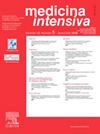患者安全对疗效的影响。从预防到治疗急性期后护理综合症。
IF 3.1
4区 医学
Q2 CRITICAL CARE MEDICINE
引用次数: 0
摘要
重症幸存者出院后可能出现身体、心理或认知症状,这些症状被称为重症监护后综合征。这些变化是由危重疾病本身和围绕它的医疗干预造成的。为了预防它,ABCDEF一揽子措施(评估/治疗疼痛,呼吸/觉醒试验,镇静剂的选择,谵谵症的减少,早期活动和锻炼,家庭)的实施已被提议,以及根据首字母缩略词GHIRN分组的其他策略(良好的沟通,讲义材料,重新定义的ICU建筑设计,呼吸器,营养)。除了在ICU住院期间采取这些预防措施外,还应通过由重症医学科协调的多学科小组确定高危患者并进行后续随访。本文章由计算机程序翻译,如有差异,请以英文原文为准。
Impacto de la seguridad del paciente en los resultados. Desde la prevención al tratamiento del síndrome post-cuidados intensivos
Survivors of critical illness may present physical, psychological, or cognitive symptoms after hospital discharge, encompassed within what is known as post-intensive care syndrome. These alterations result from both the critical illness itself and the medical interventions surrounding it. For its prevention, the implementation of the ABCDEF bundle of measures (Assess/treat pain, Breathing/awakening trials, Choice of sedatives, Delirium reduction, Early mobility and exercise, Family) has been proposed, along with additional strategies grouped under the acronym GHIRN (Good communication, Handout materials, Redefined ICU architectural design, Respirator, Nutrition). In addition to these preventive measures during the ICU stay, high-risk patients should be identified for subsequent follow-up through multidisciplinary teams coordinated by Intensive Care Medicine Departments.
求助全文
通过发布文献求助,成功后即可免费获取论文全文。
去求助
来源期刊

Medicina Intensiva
CRITICAL CARE MEDICINE-
CiteScore
2.70
自引率
20.00%
发文量
146
审稿时长
33 days
期刊介绍:
Medicina Intensiva is the journal of the Spanish Society of Intensive Care Medicine and Coronary Units (SEMICYUC) and of Pan American and Iberian Federation of Societies of Intensive and Critical Care Medicine. Medicina Intensiva has become the reference publication in Spanish in its field. The journal mainly publishes Original Articles, Reviews, Clinical Notes, Consensus Documents, Images, and other information relevant to the specialty. All works go through a rigorous selection process. The journal accepts submissions of articles in English and in Spanish languages. The journal follows the publication requirements of the International Committee of Medical Journal Editors (ICMJE) and the Committee on Publication Ethics (COPE).
 求助内容:
求助内容: 应助结果提醒方式:
应助结果提醒方式:


